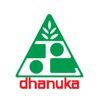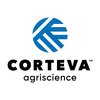Filter interviews by
Aarti Industries Interview Questions and Answers for Freshers
26 Interview questions
Steps in RCC building construction include planning, design, site preparation, foundation work, and structural framing.
1. Planning: Define project scope, budget, and timeline.
2. Design: Create architectural and structural designs, including load calculations.
3. Site Preparation: Clear the site, conduct soil tests, and set up temporary facilities.
4. Foundation Work: Excavate and pour concrete for the foundation, en...
Heat of reaction is the amount of heat released or absorbed during a chemical reaction.
Heat of reaction can be exothermic (heat released) or endothermic (heat absorbed).
It is typically measured in units of joules or calories.
Examples include combustion reactions releasing heat and photosynthesis reactions absorbing heat.
Heat of formation is the energy released or absorbed when one mole of a compound is formed from its elements in their standard states.
Heat of formation is also known as standard enthalpy of formation.
It is typically measured in units of kJ/mol.
Negative heat of formation indicates exothermic reaction, while positive heat of formation indicates endothermic reaction.
For example, the heat of formation of water (H2O) i...
Molarity is the concentration of a solution expressed as the number of moles of solute per liter of solution. Molality is the concentration of a solution expressed as the number of moles of solute per kilogram of solvent.
Molarity is measured in moles per liter (M)
Molality is measured in moles per kilogram (m)
Molarity changes with temperature due to volume changes, while molality remains constant
Molarity is commonl...
Grignard reaction involves the addition of an organomagnesium halide to a carbonyl compound to form a new carbon-carbon bond.
Formation of Grignard reagent by reacting magnesium with an alkyl or aryl halide
Addition of the Grignard reagent to a carbonyl compound to form a tertiary alcohol
Mechanism involves nucleophilic addition of the Grignard reagent to the carbonyl carbon
Commonly used in organic synthesis to creat...
Protic polar solvents are solvents that contain hydrogen atoms connected directly to an electronegative atom, such as oxygen or nitrogen.
Protic polar solvents have a partial positive charge on the hydrogen atom and a partial negative charge on the electronegative atom.
These solvents are capable of forming hydrogen bonds with solutes, making them useful in various chemical reactions.
Examples of protic polar solvent...
Polar solvents are substances that have a positive and negative charge distribution, making them capable of dissolving polar compounds.
Polar solvents have a partial positive and partial negative charge, allowing them to interact with polar molecules.
Examples of polar solvents include water, acetone, ethanol, and methanol.
These solvents are commonly used in various chemical reactions and processes due to their abil...
There are 7 buttons on my shirt.
There are typically 7 buttons on a men's dress shirt.
The number of buttons may vary depending on the style and design of the shirt.
Buttons are used for fastening the shirt and can be made of various materials like plastic, metal, or mother of pearl.
Spectroscopy is the study of the interaction between matter and electromagnetic radiation.
It involves analyzing the absorption, emission, or scattering of light by atoms or molecules.
Different types of spectroscopy include UV-Vis, IR, NMR, and mass spectrometry.
Spectroscopy is used in various fields such as chemistry, physics, astronomy, and environmental science.
Chromatography is a technique used to separate and analyze mixtures of chemicals based on their properties.
Chromatography involves a stationary phase and a mobile phase
Different compounds in the mixture interact differently with the stationary phase, leading to separation
Examples include gas chromatography, liquid chromatography, and paper chromatography
Aarti Industries Interview Experiences for Freshers
29 interviews found
I appeared for an interview in Oct 2024.
(2 Questions)
- Q1. What is Heat of formation
- Ans.
Heat of formation is the energy released or absorbed when one mole of a compound is formed from its elements in their standard states.
Heat of formation is also known as standard enthalpy of formation.
It is typically measured in units of kJ/mol.
Negative heat of formation indicates exothermic reaction, while positive heat of formation indicates endothermic reaction.
For example, the heat of formation of water (H2O) is -28...
- Q2. What is heat of reaction
- Ans.
Heat of reaction is the amount of heat released or absorbed during a chemical reaction.
Heat of reaction can be exothermic (heat released) or endothermic (heat absorbed).
It is typically measured in units of joules or calories.
Examples include combustion reactions releasing heat and photosynthesis reactions absorbing heat.
I applied via Campus Placement and was interviewed in Feb 2024. There were 3 interview rounds.
It's a written examination in which the contain was that basic chemistry fundamentals. That's it.
(7 Questions)
- Q1. What is spectroscopy?
- Ans.
Spectroscopy is the study of the interaction between matter and electromagnetic radiation.
It involves analyzing the absorption, emission, or scattering of light by atoms or molecules.
Different types of spectroscopy include UV-Vis, IR, NMR, and mass spectrometry.
Spectroscopy is used in various fields such as chemistry, physics, astronomy, and environmental science.
- Q2. What is chromatography?
- Ans.
Chromatography is a technique used to separate and analyze mixtures of chemicals based on their properties.
Chromatography involves a stationary phase and a mobile phase
Different compounds in the mixture interact differently with the stationary phase, leading to separation
Examples include gas chromatography, liquid chromatography, and paper chromatography
- Q3. Give brief description of HPCL & GC.
- Ans.
HPCL is a leading oil and gas company in India, while GC stands for Gas Chromatography used in chemical analysis.
HPCL (Hindustan Petroleum Corporation Limited) is a Navratna oil and gas company in India.
It is a Fortune Global 500 company and has a strong presence in refining, marketing, and distribution of petroleum products.
GC (Gas Chromatography) is a technique used for separating and analyzing compounds in a mixture...
- Q4. What is molarity & molality?
- Ans.
Molarity is the concentration of a solution expressed as the number of moles of solute per liter of solution. Molality is the concentration of a solution expressed as the number of moles of solute per kilogram of solvent.
Molarity is measured in moles per liter (M)
Molality is measured in moles per kilogram (m)
Molarity changes with temperature due to volume changes, while molality remains constant
Molarity is commonly use...
- Q5. Write the grignard reaction with its mechanism & give brief description.
- Ans.
Grignard reaction involves the addition of an organomagnesium halide to a carbonyl compound to form a new carbon-carbon bond.
Formation of Grignard reagent by reacting magnesium with an alkyl or aryl halide
Addition of the Grignard reagent to a carbonyl compound to form a tertiary alcohol
Mechanism involves nucleophilic addition of the Grignard reagent to the carbonyl carbon
Commonly used in organic synthesis to create com...
- Q6. What is polar solvents?
- Ans.
Polar solvents are substances that have a positive and negative charge distribution, making them capable of dissolving polar compounds.
Polar solvents have a partial positive and partial negative charge, allowing them to interact with polar molecules.
Examples of polar solvents include water, acetone, ethanol, and methanol.
These solvents are commonly used in various chemical reactions and processes due to their ability t...
- Q7. What is protic polar solvents?
- Ans.
Protic polar solvents are solvents that contain hydrogen atoms connected directly to an electronegative atom, such as oxygen or nitrogen.
Protic polar solvents have a partial positive charge on the hydrogen atom and a partial negative charge on the electronegative atom.
These solvents are capable of forming hydrogen bonds with solutes, making them useful in various chemical reactions.
Examples of protic polar solvents inc...
(4 Questions)
- Q1. Give me your brief introduction.
- Ans.
I am a recent graduate with a strong academic background in business administration and a passion for learning and growth.
Recent graduate with a degree in business administration
Passionate about learning and growth
Strong academic background
Eager to start a career in the business field
- Q2. What is your strength and weeknees.
- Ans.
My strength is my strong work ethic and attention to detail. My weakness is that I can be overly critical of my own work.
Strength: Strong work ethic - always willing to put in extra effort to get the job done
Strength: Attention to detail - I ensure that all tasks are completed accurately and thoroughly
Weakness: Overly critical of my own work - I sometimes struggle to recognize my own accomplishments
- Q3. How many times you work in our organization?
- Ans.
I have not worked in your organization before.
I have not had the opportunity to work in your organization yet.
I am excited about the possibility of starting my career with your organization.
I am eager to learn and grow within your company.
- Q4. How many button are present in your shirt?
- Ans.
There are 7 buttons on my shirt.
There are typically 7 buttons on a men's dress shirt.
The number of buttons may vary depending on the style and design of the shirt.
Buttons are used for fastening the shirt and can be made of various materials like plastic, metal, or mother of pearl.
I applied via Campus Placement and was interviewed in Jul 2023. There were 3 interview rounds.

(6 Questions)
- Q1. How many type of reactor
- Ans.
There are several types of reactors used in chemical processes, each serving specific functions and applications.
Batch Reactors: Used for small-scale production, e.g., pharmaceuticals.
Continuous Stirred Tank Reactors (CSTR): Ideal for continuous processes, e.g., wastewater treatment.
Plug Flow Reactors (PFR): Suitable for high conversion rates, e.g., polymer production.
Fixed Bed Reactors: Common in catalytic processes, ...
- Q2. What is Dihidration and reaction
- Ans.
Dehydration is the removal of water from a substance, often resulting in a chemical reaction or change in state.
Dehydration can occur in organic compounds, such as the formation of alkenes from alcohols.
An example is the dehydration of ethanol to produce ethylene (C2H4).
In biological systems, dehydration synthesis is a process where two molecules are joined by the removal of water.
Dehydration reactions are commonly use...
- Q3. What is this boling point
- Ans.
The boiling point is the temperature at which a liquid's vapor pressure equals atmospheric pressure, causing it to transition to gas.
Boiling point varies with atmospheric pressure; higher pressure raises the boiling point.
Water boils at 100°C (212°F) at sea level but at lower temperatures at higher altitudes.
Different substances have different boiling points; for example, ethanol boils at 78.37°C (173.07°F).
Boiling poi...
- Q4. What is this ejector system
- Ans.
An ejector system uses high-velocity fluid to create a vacuum or move materials, commonly used in chemical and industrial processes.
Utilizes the principle of momentum transfer to create suction.
Commonly used in vacuum systems, such as in distillation processes.
Can handle gases, vapors, and liquids, making it versatile.
Examples include steam ejectors in power plants and water ejectors in wastewater treatment.
- Q5. Vaccum pressure or air pressure me different
- Ans. A vacuum is any pressure less than the local atmospheric pressure
- Q6. What is this disttlion
- Ans. Process of separating the components of a liquid mixture through selective evaporation and condensation
(2 Questions)
- Q1. Salary discussion and 6 month salary silip
- Q2. Safety discussion and old company experience
Interview Preparation Tips
I appeared for an interview before May 2024, where I was asked the following questions.
- Q1. Question about study.
- Q2. Organic & Analytical
I applied via Campus Placement and was interviewed in Jul 2023. There were 3 interview rounds.

It was a test on amcat platform where basic aptitude and technical questions were there.
(3 Questions)
- Q1. Different types of flow meters and their working.
- Ans.
Flow meters are devices used to measure the flow rate of a fluid in a pipeline or open channel.
Types of flow meters include differential pressure meters, positive displacement meters, velocity meters, and mass flow meters.
Differential pressure meters work by measuring the pressure drop across a constriction in the flow path.
Positive displacement meters measure the flow rate by repeatedly filling and emptying a chamber ...
- Q2. Temperature measurements and all other types of measuring instruments like pressure and level measurement devices.
- Q3. Control system and PLC, DCS, SCADA related questions.
Interview Preparation Tips
(1 Question)
- Q1. ACB VCB Maintenance
Interview Preparation Tips
I applied via Campus Placement and was interviewed in Jul 2023. There were 2 interview rounds.
It was good for technically strong people
(1 Question)
- Q1. LMTD, HEAT EXCHANGE, DISTILLATION
I applied via Walk-in and was interviewed in Apr 2023. There were 3 interview rounds.

(2 Questions)
- Q1. At a technical level your qualifications
- Ans.
I have a Bachelor's degree in Computer Science and Engineering.
Bachelor's degree in Computer Science and Engineering
Proficient in programming languages such as Java and Python
Experience in database management and web development
Completed various technical courses and certifications
- Q2. DCS operation, Shift charge
Chemical engineering questions like unit operations and unit process
Skills evaluated in this interview

(1 Question)
- Q1. Questions were released to industrial measurements mostly like instruments used in pressure measurement,flow measurement, level measurement, temperature measurement their working principles and range.
(1 Question)
- Q1. First there was discussion over my project after that he asked some questions from my hobbies which I have written in my resume then he continued with the technical questions from industrial measurement in...
Interview Preparation Tips
I applied via Recruitment Consulltant and was interviewed in May 2023. There were 2 interview rounds.

(2 Questions)
- Q1. Something about yourself What is your strength and weakness What is finance What is gst How many types of gst used in accounting What is balance sheet
- Q2. Pls speak about tds
- Ans.
TDS stands for Tax Deducted at Source, which is a system where tax is deducted by the payer at the time of making payment.
TDS is applicable on various types of payments such as salary, interest, rent, commission, etc.
The deducted TDS amount is then deposited with the government on behalf of the payee.
TDS rates vary depending on the type of payment and the tax status of the payee.
TDS certificates like Form 16 and Form 1...
Interview Preparation Tips
Top trending discussions






Aarti Industries Interview FAQs
The duration of Aarti Industries interview process can vary, but typically it takes about less than 2 weeks to complete.
Tell us how to improve this page.
Aarti Industries Interviews By Designations
- Aarti Industries Assistant Manager Interview Questions
- Aarti Industries Office Trainee Interview Questions
- Aarti Industries Deputy Manager Interview Questions
- Aarti Industries DCS Operator Interview Questions
- Aarti Industries Executive Production Interview Questions
- Aarti Industries Executive Interview Questions
- Aarti Industries Graduate Engineer Trainee (Get) Interview Questions
- Aarti Industries Operations Executive Interview Questions
- Show more
Interview Questions for Popular Designations
- Office Trainee Interview Questions
- Assistant Manager Interview Questions
- Deputy Manager Interview Questions
- DCS Operator Interview Questions
- Executive Interview Questions
- Operations Executive Interview Questions
- Executive Production Interview Questions
- Graduate Engineer Trainee (Get) Interview Questions
- Show more
Overall Interview Experience Rating
based on 17 interview experiences
Difficulty level
Duration
Interview Questions from Similar Companies
Aarti Industries Reviews and Ratings
based on 3.2k reviews
Rating in categories
|
Assistant Manager
658
salaries
| ₹4.5 L/yr - ₹12.5 L/yr |
|
Deputy Manager
592
salaries
| ₹6.6 L/yr - ₹18.5 L/yr |
|
Executive
522
salaries
| ₹2.5 L/yr - ₹7.7 L/yr |
|
Plant Operator
346
salaries
| ₹1.6 L/yr - ₹5.2 L/yr |
|
Senior Executive
341
salaries
| ₹4.1 L/yr - ₹9 L/yr |

UPL

Coromandel International

PI Industries

Rallis India
- Home >
- Interviews >
- Aarti Industries Interview Questions >
- Aarti Industries Interview Questions for Fresher













